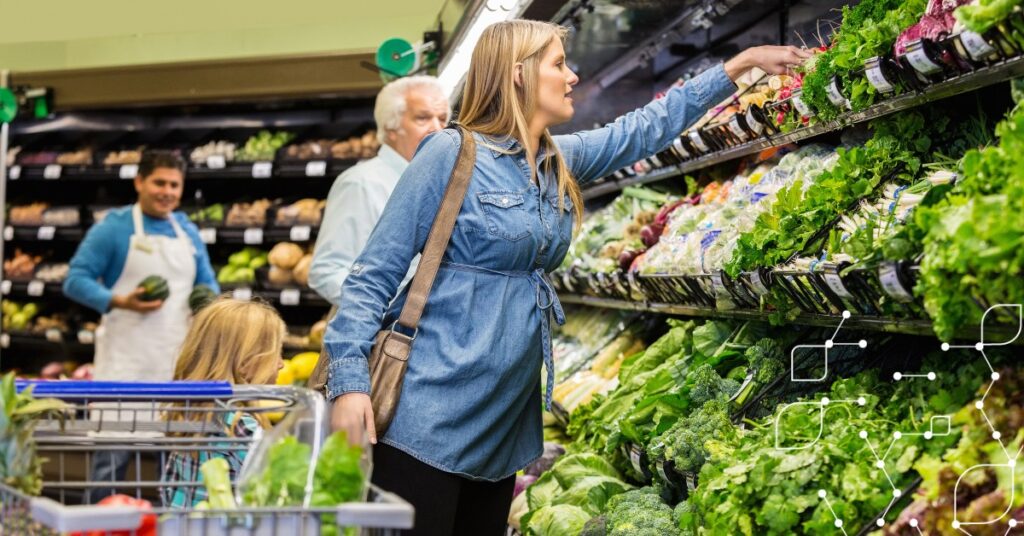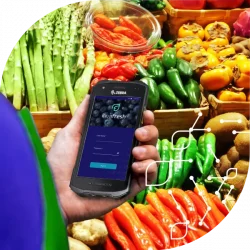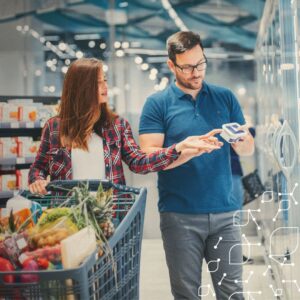
Food waste is a significant problem in grocery stores, with an estimated 30-40% of all food produced worldwide is wasted. This waste has substantial economic costs for businesses and a devastating environmental impact, contributing to greenhouse gas emissions and other environmental issues. In recent years, there has been growing interest in using data analytics to help reduce food waste in the grocery supply chain.
By using advanced analytics tools to optimize inventory management, monitor customer behavior, and track food waste, grocery retailers can significantly reduce waste and improve sustainability. In this blog post, we will explore the potential of data analytics to help grocery retailers reduce food waste and discuss the importance of sustainable grocery stores in the fight against food waste.
How Much Food do Grocery Stores Waste?
According to the Food and Agriculture Organization (FAO) of the United Nations, approximately 1.3 billion tons of food are wasted globally each year, with grocery stores being one of the largest contributors to this waste. In the United States alone, grocery stores waste an estimated 43 billion pounds of food each year, which equates to roughly $218 billion (about $670 per person in the US) in lost revenue.
The environmental impact of food waste is also significant, as it is responsible for approximately 8% of global greenhouse gas emissions. In addition, food waste consumes a considerable amount of water and other resources used in food production, exacerbating issues related to water scarcity and other environmental challenges.
From an economic perspective, reducing food waste can have a significant positive impact on the bottom line of grocery stores. By implementing strategies to reduce waste and optimize inventory management, grocery retailers can save money on purchasing and disposal costs and improve their brand image by demonstrating a commitment to sustainability.
How can Analytics Help Reduce Food Waste in Grocery Stores?
Data analytics can play a crucial role in reducing food waste in grocery stores and the supply chain by providing insights into customer behavior, inventory management, and supply chain efficiency.
One way that analytics can be used to reduce food waste is by optimizing inventory management. By analyzing sales data, customer behavior, and other factors, retailers can forecast demand and adjust their inventory levels accordingly. This can help reduce overstocking and understocking of products, leading to spoilage and waste.
Analytics can also help retailers identify products at risk of becoming waste and take proactive measures to reduce waste. For example, retailers can use predictive analytics to identify products approaching their expiration dates and take steps to sell or donate them before they become waste.
In addition to reducing waste within grocery stores, analytics can help optimize the supply chain and reduce waste at the source. By analyzing data on transportation, logistics, and sourcing, retailers can identify inefficiencies in the supply chain and take steps to reduce waste and improve sustainability. For example, analytics can identify the most efficient transportation routes, minimize packaging waste, and optimize sourcing practices to reduce waste.
The potential of data analytics to reduce food waste in the supply chain is enormous. However, successfully implementing data analytics requires a commitment to sustainability and the willingness to invest in the necessary technology and resources.
Steps for Successful Implementation of Data Analytics in Grocery Stores

Implementing data analytics in grocery stores can be a complex process that requires careful planning, collaboration, and investment. Here are key steps to consider when implementing data analytics into your operations.
1. Define Your Goals:
Before tackling any data analytics initiative, it’s essential to define your goals and identify the specific outcomes you hope to achieve. This could include reducing waste, improving inventory management, increasing sales, or improving customer engagement.
2. Identify Key Data Sources:
To use data analytics effectively, you’ll need access to a wide range of data sources, including sales data, inventory data, customer data, and external data sources such as weather and demographic data. Work with a software vendor to identify the data sources you need and ensure that you have access to the necessary data.
3. Choose the Right Software Vendor:
Selecting the right software vendor is critical to the success of your data analytics initiative. Look for a vendor with expertise in the grocery industry and a proven track record of delivering results. Consider factors such as the vendor’s technology stack, their data security and privacy approach, and their ability to customize their solution to your needs.
4. Develop a Data Strategy:
Once you have identified your goals and data sources, work with your software vendor to develop a data strategy that outlines how you will collect, analyze, and act on data insights. This could include developing dashboards and reports, setting up alerts for key metrics, or integrating data analytics into your existing workflows.
5. Train Your Team:
To effectively use data analytics, your team must have the skills and knowledge to interpret data insights and act. Provide training and support to ensure your team can use data analytics effectively.
By following these steps and working closely with your software vendor, you can successfully implement data analytics in your grocery store and achieve sustainability and waste reduction goals. View the case study below as an example.
Using Data Analytics to Build Sustainable Grocery Stores
As grocery retailers increasingly focus on sustainability and waste reduction, data analytics is emerging as a powerful tool for achieving these goals. By leveraging advanced analytics and AI technologies, retailers can optimize their inventory management, reduce waste, and improve the sustainability of their operations.
While challenges are associated with implementing data analytics in grocery stores and the supply chain, many success stories and examples of best practices exist. From using predictive analytics to optimize ordering and reduce overstocking to leveraging machine learning to identify opportunities for waste reduction, retailers have a range of tools at their disposal for building more sustainable grocery stores.
By taking a data-driven approach to sustainability, retailers can reduce their environmental footprint and improve their bottom line and engage customers and stakeholders in their efforts to create a more sustainable future. As the grocery industry evolves, data analytics will be an increasingly important tool for building sustainable and resilient food systems.



![[Read next: "Analytics in Retail: A Grocers Guide"]](https://no-cache.hubspot.com/cta/default/21714346/interactive-151406865824.png)






